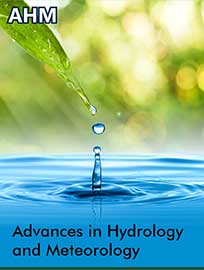 Research Article
Research Article
Creation and Assessment of an Index for Atmospheric Blockings in Brazil’s Central Region
Marcio Cataldi1,2*, Eric Miguel Ribeiro2, Lis Silveira Andrade2, Augusto Pandolfi de Lima2, Gabriel Lucas Monteiro de Almeida2 and Talita Reis Antunes Pereira3
1Regional Atmospheric Modeling Group (MAR), Physics of the Earth, Department of Physics, Regional Campus of International Excellence (CEIR) “Campus Mare Nostrum”, University of Murcia, Murcia, Spain
2Climate System Monitoring and Modeling Laboratory (LAMMOC), Water Resources and Environmental Engineering, Federal Fluminense University, Rio de Janeiro, Brazil
3Ambmet Consultoria Ltda, Startup, Incubadora de empresas UFF, Niterói, Brasil
Marcio Cataldi, Climate System Monitoring and Modeling Laboratory (LAMMOC), Water Resources and Environmental Engineering, Federal Fluminense University, Rio de Janeiro, Brazil.
Received Date: February 20, 2024; Published Date: March 01, 2024
Abstract
The management of electricity in Brazil is conducted in an integrated manner to ensure security and economy. The system generation capacity is primarily composed of hydroelectric plants distributed in different regions of the country. However, in recent years, the precipitation regime in the country and, consequently, water availability have shown significant changes in climatological patterns, putting water storage in a critical situation, particularly in the northeast region. Therefore, we analyzed whether the occurrence of atmospheric blocks is becoming more frequent and affects the precipitation regime patterns. The main goal is to develop an index to assess atmospheric block occurrence through vorticity at 850 hPa and 500 hPa and geopotential anomaly variables and to investigate other mechanisms that are related to the increase in blockage occurrence rate. Based on these data extracted from the ERA5 reanalysis, it was possible to establish an index and climatology of atmospheric blocks over South America. The index was created for seven regions of Brazil, and climatology was used to obtain geopotential anomalies for the period 1980-2010. By analyzing the index, it was possible to see how atmospheric blockades in central Brazil were more frequent and persistent from 2010 to 2023, with approximately 150% more atmospheric blocking observed in this period relative to the period from 1960-1980.
Keywords:Atmospheric blockings; Precipitation regime; drought; Climate Changes
-
Marcio Cataldi*, Eric Miguel Ribeiro, Lis Silveira Andrade, Augusto Pandolfi de Lima, Gabriel Lucas Monteiro de Almeida and Talita Reis Antunes Pereira. Creation and Assessment of an Index for Atmospheric Blockings in Brazil’s Central Region. Adv in Hydro & Meteorol. 1(4): 2024. AHM.MS.ID.000519.
-

This work is licensed under a Creative Commons Attribution-NonCommercial 4.0 International License.






